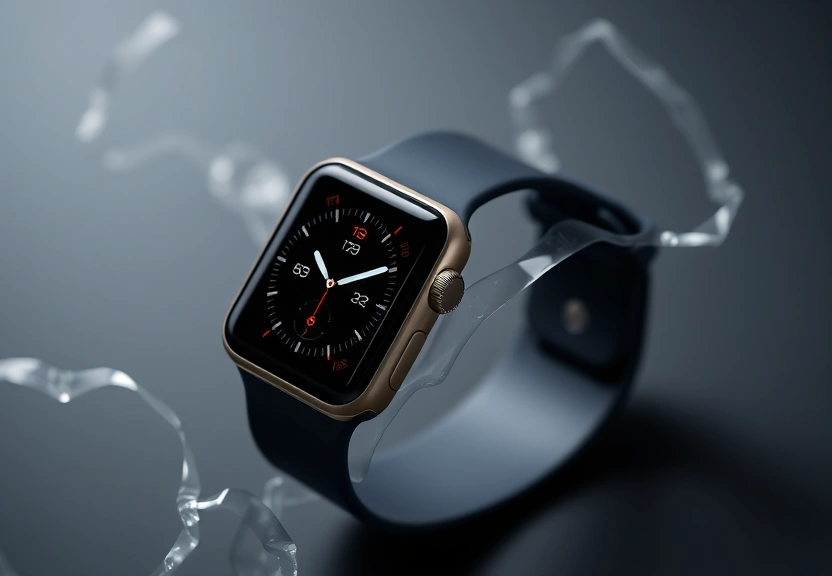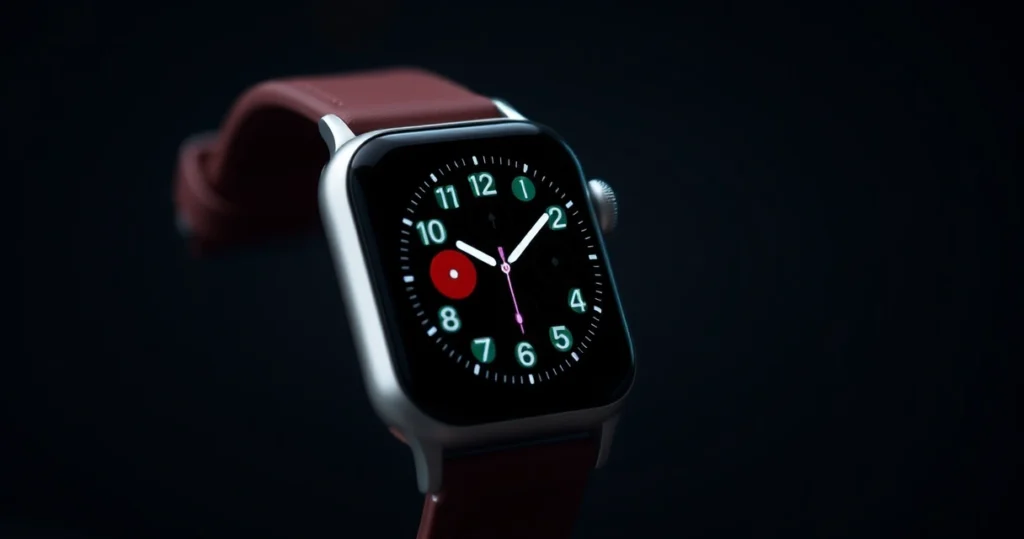Apple Watch Revives Blood Oxygen Sensing with Exciting Redesign
In the ever-evolving world of health technology, the Apple Watch has consistently positioned itself at the forefront, offering users a range of fitness and health-monitoring features. Recently, the tech giant made headlines when it announced a major redesign of its blood oxygen sensing feature, a capability that was removed from select smartwatches due to a patent-infringement lawsuit. This return to functionality not only marks a significant development for Apple Watch users but also highlights the growing importance of health technology in everyday life.

The redesigned blood oxygen sensing feature promises to enhance the accuracy and reliability of the device, allowing users to monitor their health more effectively. As consumers become increasingly health-conscious, the integration of advanced health features in wearable technology has never been more relevant. In this article, we will delve into the reasons behind the initial removal of the blood oxygen sensing capability, the specifics of the redesign, and what users can expect from this exciting update.
The Initial Removal of Blood Oxygen Sensing
The blood oxygen sensing feature, known for its ability to measure blood oxygen levels using infrared light, was initially a cornerstone of the Apple Watch’s health offerings. However, in 2021, the feature was pulled from some models due to a patent-infringement lawsuit filed by a competitor. This legal battle raised questions about the viability of Apple’s health monitoring technologies and forced the company to re-evaluate its strategies.
Understanding Patent-Infringement Lawsuits
Patent-infringement lawsuits can significantly impact technology companies, especially those that rely heavily on innovative features to differentiate their products in the market. Such legal challenges can delay product releases, impact sales, and hinder the integration of new technologies. In Apple’s case, the removal of the blood oxygen monitoring feature was a strategic decision to avoid potential legal repercussions and to focus on redesigning the technology to ensure compliance with patent laws.
The Redesigned Blood Oxygen Sensing Feature
With the resolution of the patent issues, Apple has taken a bold step to reintroduce blood oxygen sensing with an exciting redesign. This iteration promises to build on the previous model while addressing flaws and enhancing functionality. The redesign is not just cosmetic; it involves significant technical improvements that will provide users with more accurate readings.
Key Improvements in Design and Functionality
- Enhanced Sensor Technology: The new design incorporates advanced photodetectors and algorithms that improve the accuracy of blood oxygen readings, ensuring that users receive reliable health data.
- Streamlined User Interface: The interface for accessing blood oxygen readings has been revamped, making it more user-friendly and intuitive, even for those who may not be tech-savvy.
- Real-Time Monitoring: Users can now receive instant feedback on their blood oxygen levels, allowing for prompt action if readings fall outside the norm.
- Integration with Health App: The redesigned feature seamlessly integrates with the Apple Health app, providing users with a comprehensive overview of their health metrics and trends over time.
Health Benefits of Blood Oxygen Monitoring
The ability to monitor blood oxygen levels is crucial for various health conditions, particularly for individuals with respiratory issues or those who engage in high-altitude activities. The redesigned blood oxygen sensing feature in the Apple Watch opens up new possibilities for users to take charge of their health proactively. Here are some notable benefits:
1. Early Detection of Health Issues
Regular monitoring of blood oxygen levels can help users identify potential health issues before they become serious. For example, a sudden drop in blood oxygen levels could indicate respiratory distress, prompting timely medical intervention.
2. Enhanced Fitness Tracking
For fitness enthusiasts, understanding blood oxygen levels can aid in optimizing workouts. By monitoring oxygen saturation, users can tailor their exercise routines to maximize performance and recovery.
3. Increased Awareness of Overall Health
The integration of blood oxygen monitoring into daily health routines can lead to increased awareness and proactive management of overall health, encouraging users to adopt healthier lifestyles.
Market Impact and Competitive Landscape
The reintroduction of blood oxygen sensing in the Apple Watch is likely to influence the competitive landscape of smartwatches. As consumers increasingly prioritize health technology, brands that offer robust health tracking features will have a competitive edge. Apple’s move may compel other smartwatch manufacturers to innovate and enhance their health monitoring capabilities.
Potential Reactions from Competitors
With Apple back in the game with its redesigned blood oxygen sensing feature, competitors will likely respond by either improving their existing offerings or introducing new health technologies. The smartwatch market is becoming increasingly saturated, and brands must differentiate themselves to capture consumer interest.
Frequently Asked Questions (FAQ)
1. What is blood oxygen sensing in the Apple Watch?
Blood oxygen sensing is a feature that allows the Apple Watch to measure the oxygen saturation level in your blood, providing insights into your respiratory health.
2. Why was the blood oxygen sensing feature removed from some Apple Watch models?
The feature was removed due to a patent-infringement lawsuit that raised legal concerns about its use. Apple opted to redesign the technology to comply with patent laws.
3. What improvements have been made to the redesigned feature?
The redesigned blood oxygen sensing feature includes enhanced sensor technology, a streamlined user interface, real-time monitoring capabilities, and better integration with the Apple Health app.
4. How can I access my blood oxygen readings on the Apple Watch?
You can access your blood oxygen readings through the dedicated app on your Apple Watch or via the Apple Health app on your iPhone.
5. Is blood oxygen monitoring important for everyone?
While it is particularly beneficial for individuals with respiratory conditions or those engaging in high-altitude activities, regular monitoring can also provide valuable health insights for anyone interested in their overall well-being.
Conclusion
The revival of blood oxygen sensing in the Apple Watch represents a significant milestone in health technology, showcasing Apple’s commitment to providing users with advanced health monitoring capabilities. The redesigned feature not only enhances the user experience but also underscores the importance of proactive health management in today’s fast-paced world. As technology continues to advance, the integration of health features in wearable devices will play a crucial role in empowering individuals to take charge of their health and well-being.
With the new enhancements, Apple is poised to lead the health technology sector, reaffirming its status as a trusted brand in the smartwatch market. As we look forward to the future of health monitoring, the Apple Watch’s innovative approach to blood oxygen sensing is bound to set new standards for the industry.
📰 Original Source
Este artigo foi baseado em informações de: https://www.wired.com/story/apple-watch-blood-oxygen-sensing-is-back/



